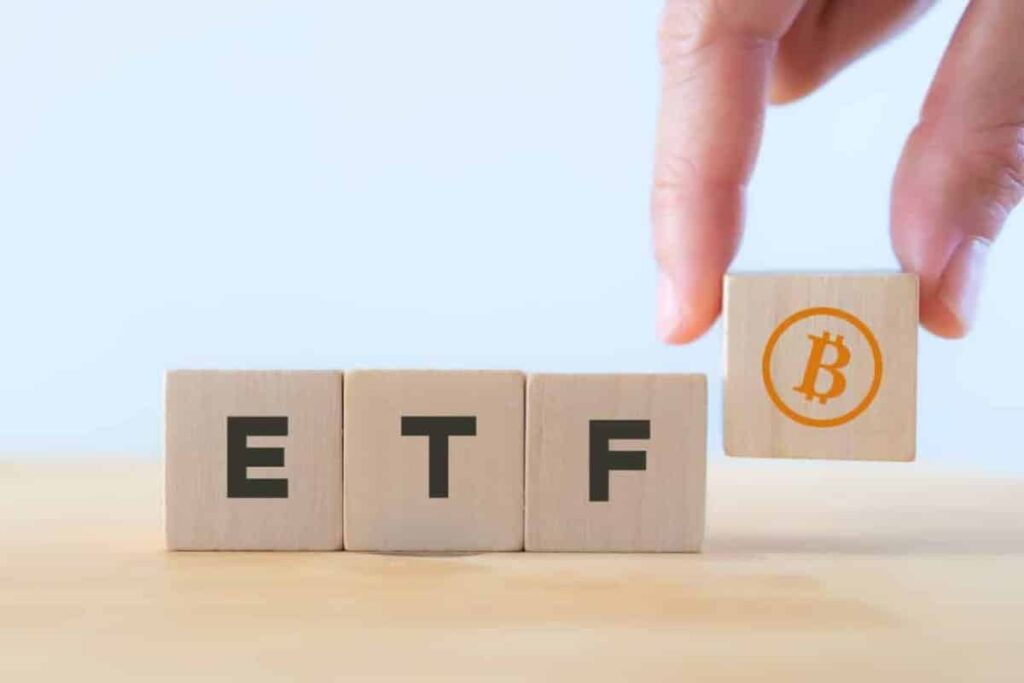As Bitcoin (BTC) surged passed $38,000 in November, the ProShares Bitcoin Strategy ETF (BITO) has tapped a new all-time high for assets under management (AUM).
On Tuesday, the fund’s Bitcoin futures contracts reached a record $1.47 billion in value. That’s up from $1.1 billion at the start of the month, and $544 million at the start of the year.
“The flows have been really strong,” said Simeon Hyman, Global Investment Strategist at ProShares, to CryptoNews in an interview. “It hasn’t all been [BTC] appreciation, there have been very strong inflows.”
As of November 30, BITO has absorbed $470.9 million in net flows year-to-date. It’s also averaged $160 million in daily trading volume, putting it in the top 5% of all U.S. ETFs.
November was one of the fund’s best-performing months aside from its inception in October 2021, when it became the first Bitcoin ETF to launch in the United States. It marked its previous all-time high AUM at $1.44 billion just weeks later on November 10, when BTC itself reached its all-time high of $69,000.
Ironically, both BTC and BITO’s stellar performance has been largely driven by growing excitement for a U.S. Bitcoin spot ETF – a theoretical competitor to BITO in the arena of institutional Bitcoin investment options.
As of Friday, Bloomberg ETF analysts expect a simultaneous approval of several ETFs from BlackRock, Ark, Fidelity, and others in early January.
Window is officially Jan 5th to Jan 10th. Really this means that any potential approval orders are going to come on either Monday Jan 8, Tuesday Jan 9, or Wednesday Jan 10. Mark your calendars people. https://t.co/8ob8Y6pgU5
— James Seyffart (@JSeyff) December 1, 2023
Unlike BITO, a spot ETF would back its respective shares with actual BTC rather than futures contracts, allowing for a more direct form of exposure.
According to Hyman, BITO’s total return for investors is 115% year-to-date. By comparison, shares for the Purpose Bitcoin CAD ETF – a Bitcoin spot ETF in Canada – are up 127% this year, while BTC itself has risen 133%.
How Will BITO Perform Once A Spot ETF Goes Live?
Many expert analysts have predicted that approval of a Bitcoin spot ETF could suck capital away from competing BTC-adjacent companies, such as futures ETFs and publicly listed miners.
Hyman, however, believes BITO still boasts some key advantages over spot-based funds, and will “co-exist nicely” alongside them.
“The futures market is a regulated place,” he explained. “You have to post margin, there’s a clearing house… there’s a level of security there in the mature futures market.”
By comparison, Binance – the world’s largest Bitcoin exchange for spot trading – was fined $4.3 billion last month for failure to comply with U.S. anti-money laundering rules.
Meanwhile, the largest U.S. based Bitcoin exchange still draws less daily volume than the CME Bitcoin futures market, which has nearly caught up to Binance in terms of total futures open interest.
“There’s some academic evidence that information is translated into price faster in the Bitcoin futures market than in the spot market,” added Hyman. He compared the theory to the widespread assumption that credit-default swaps – a form of default insurance – reflect information about changes in a company’s credit risk faster than the cash bond market.
When asked about the potential market impact of a Bitcoin spot ETF, Hyman said he doesn’t believe it will be as “powerful” as investors broadly realizing crypto’s place within an investment portfolio. He stated:
“If you’ve got an asset class that zigs when other asset classes zag, and it’s volatile, that means you sprinkle a little bit of into a portfolio of traditional assets and you enhance your portfolio efficiency… I think more people will see that as a use case.”
Read the full article here













